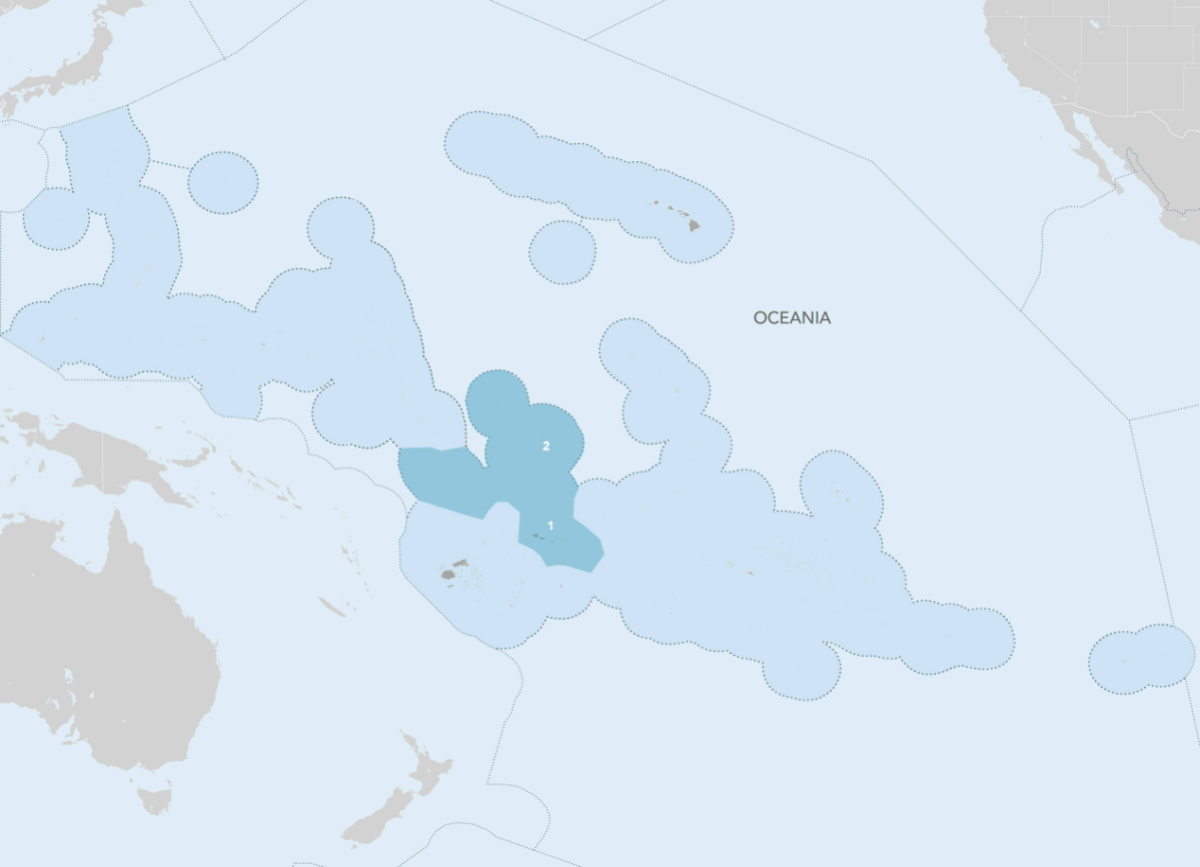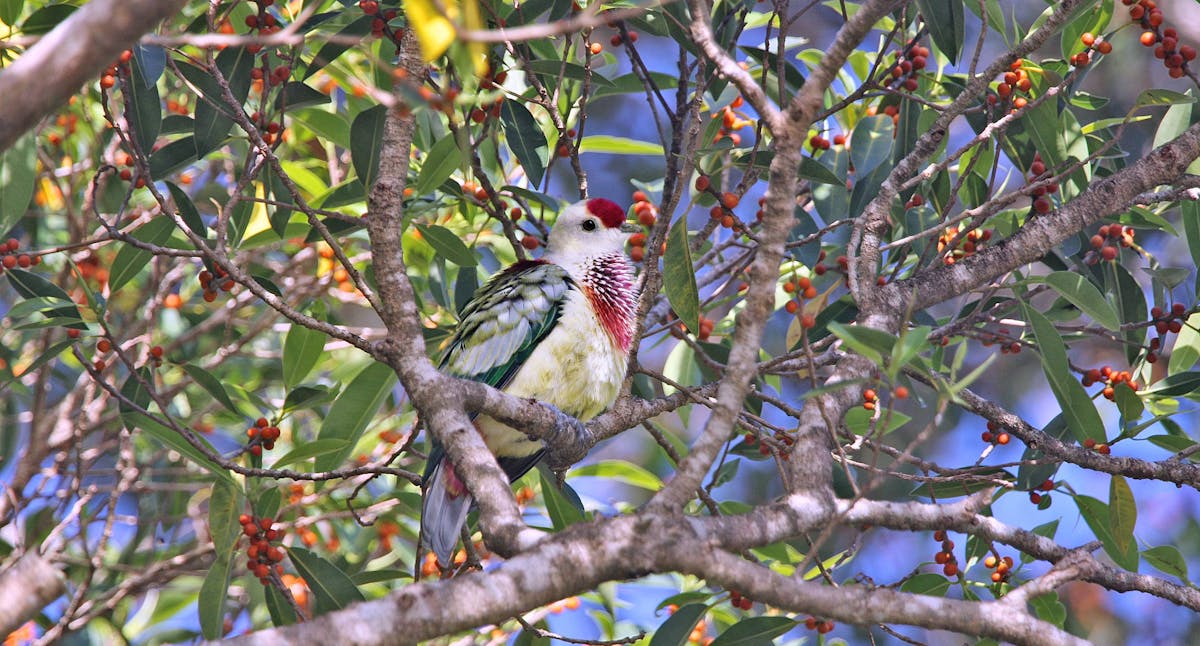How the many-colored fruit dove helps the tropics flourish
One Earth’s “Species of the Week” series highlights an iconic species that represents the unique biogeography of each of the 185 bioregions of the Earth.
If a white dove were to fly through a rainbow, it would come to the other side as a fruit dove. There are wide varieties of fruit doves on the South Pacific Islands and in New Zealand, Australia, and Tasmania.
What they share in common is a plumage that seems to be a reminder of the season they were born in and a celebration of the rainforest fruits they feed on.

The many-colored fruit dove is the Iconic Species of the Samoa & West Polynesian Tropical Islands Bioregion (OC5).
A cultural icon of Samoa
In Samoa, Fiji, and Tonga, the many-colored or rainbow fruit dove (Ptilinopus perousii) is endemic to these islands. Samoan peoples, who have interacted with this beautiful bird for generations, call it "Manuma" in their language.
There are two subspecies, Ptilinopus perousii perousii, and Ptilinopus perousii mariae. The former is found only in Samoa, and the latter in Fiji and Tonga.
Tiny but bursting with color
Its size is small, about 23 centimeters (9.1 in) long, and about 90 grams (3.2 oz) in weight. It has a rose-red crown and shawl over a light yellow back.
The male has a flecked red breast and a white-pale yellow head, while the female's breast is spotted dark green and gray, and its head is light gray. It has a green upper tail and a rose-red undertail in Samoan but a yellow in Fiji and Tonga. Wings are light green with big gray mottles and dark green tips, while females' wings are darker green.
Keeping the ecosystem thriving with figs
The fruit dove is a frugivore. The Samoan fruit dove mainly feeds on the banyan fig tree, known for its adventitious prop roots that are endemic to the Pacific Islands. Ripe banyan fruits are the same color as the red on their crown and shawl.
The structure of fig fruits is a syconium, meaning that it is an enclosure with tens of thousands of tiny flowers or florets. These get pollinated by wasps and become little fruits with even smaller seeds. Since fruit doves spend their time flying and perching within the canopy, their droppings fall on branches, which ensures that fig seedlings have a chance to germinate.
The Fiji and Tonga fruit dove feeds on the fruits of other trees: Ylang ylang (Cananga odorata), Bishop wood (Bischofia javanica), and Māgele (Trema cannabina).
Nomadic life in the trees
Fruit doves are arboreal, meaning they only interact with trees. Their habitats are subtropical and tropical moist rainforests, rainforest margins, mangroves, wooded stream margins, Banyan figs, lilly pillies, evergreen shrubs called pittosporums, and vine trees.
The fruit dove is nomadic, moving within the islands, especially Fiji and Tonga, following the ripening fruit. It feeds in pairs or loose flocks at any height in the canopy, with more females than males.
Breeding and nest building
The nest is a typical pigeon nest made of sticks on a thin branch, sometimes over water, usually three to ten meters above the ground. It breeds in spring and early summer, and a single white egg is laid.
Threats from severe weather
The many-colored fruit dove's primary food source, the banyan fruit, is in decline due to deforestation and its susceptibility to storm damage. In the 1990s, Cyclona Val and Cyclone Ofa killed or damaged several banyan trees or stripped them bare of leaves and fruit.
The National Marine Sanctuaries have been monitoring ecosystems of the South Pacific Islands for decades. After the cyclones, the American Samoa Government instituted legislative protection for several vulnerable bird species, including the rainbow fruit dove 'Manuma,' the purple-capped fruit dove 'Manutagi' (Ptilinopus porphyraceus), and the Pacific imperial pigeon 'Lupe' (Ducula pacifica microcera).
Protecting tropical ecosystems
Over the past few decades, numerous natural and human-induced events have impacted the coastline and coral reefs. The coral reef has shown a remarkable capacity to regenerate after each disaster. The cycle of 'boom and bust' - periods of damage followed by periods of solid growth and resilience - is characteristic of tropical ecosystems.
The species that reside in these areas are no different. In New South Wales, Australia, fruit doves and their ecosystems are closely monitored thanks to a fantastic conservation program. With protection and support, the colorful birds thrive and create a brighter future for their entire ecosystem.
Explore Earth's Bioregions

